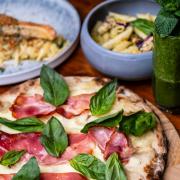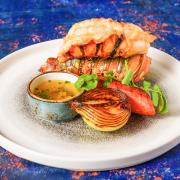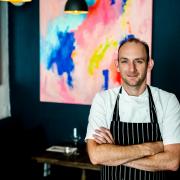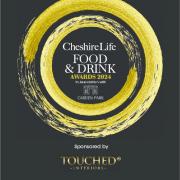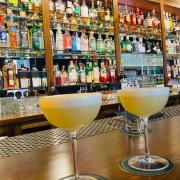Pubs and bars old and new stand side by side in central Manchester, echoing the past and
acknowledging the future. Mike Smith pulled up a stool to hear about their intriguing histories Words by Mike Smith Photos by John Cocks
Manchester is a city of contrasts, with modern glass and steel structuresrubbing shoulders with buildings from the past, including several historic inns.
Nowhere is the contrast more marked than in Exchange Square, where shoppers emerging from Selfridge’s department store are confronted with a vision of sixteenth-century Manchester in the form of the Old Wellington Inn.
Constructed in 1552, this attractive halftimbered building has a fascinating history. It was the birthplace of the multitalented John Byrom, inventor of a system of shorthand, writer of lyrics for hymns, accomplished poet and originator of the phrase ‘Tweedledum and Tweedledee’. In 1830, it became a public house known as the Vintners Arms and then as the Kenyon Vaults, before being christened the Wellington Inn in 1865.
In the eighteenth century, the inn was extended to house John Shaw’s Punch House, where ‘High Tories’ gathered at what became the first gentlemen’s club in Manchester. In 1796, the Punch House became Sinclair’s, acquiring the name Sinclair’s Oyster Bar when oysters wereput on the menu in 1845. In 1974, the two pubs were raised 1.4 metres to fit in with the development of the Arndale Centre. 22 years later, they survived an IRA bomb that damaged many of the surrounding buildings.
During the reconstruction of the devastated area, they were dismantledand re-erected at right angles to each other to form a new area called Shambles Square.
The happy result of this drastic reorientation is one of the most popularvenues in the city for diners and drinkers, who can take advantage of pleasant outdoor seating areas. The Old Wellington has cask ale on offer and its popular menu includes classic sausage and mash and an award-winning Cumberland vegetarian option.
Sinclair’s Oyster Bar, which has the atmosphere of a traditional pub, has an extensive and varied menu of its own. Pointing to the figure of ‘Molly’ on one of the inn signs, Christine Taylor, who manages the bar with her husband Nick, said: ‘In the old days, oysters were sold by Molly to the poor, but they are regarded as a delicacy these days – ours are farmed atLoch Fyne.’
Shambles Square is named after the butchers’ shops which used to stand in the area, where meat was displayed on tables known as ‘schamels’.
Chester once had an inn called the Shambles, which was movedto Manchester in 1926 and reerected in Fountain Street, where its black-and-white frontage, complete with an effigy of Shakespeare, forms thefa�ade of the Shakespeare pub and restaurant.
New landlord Luke Clifford is hoping to restore the wonderful frontage of his pub, which is said to be haunted by a barmaid who hung herself afterbeing raped. Although Luke finds himself sleeping in a room with a beam that still carries the burn marks of the rope used in the suicide, he says: ‘I feel lucky to be here, especially when I look out of my bedroom and see so many people taking photographs of the pub.’
It was during Shakespeare’s time that the first samples of potatoes were brought to Britain from the Americas. When Manchester became the world’s first industrial city, the nutritious tubers became a cheap source of essential nutrition for working-class families, who were avid consumers of a potato known as the Oxnoble, which was bought into the city by canal, unloaded at ‘potato wharfs’ and stored in huge sheds which now accommodate part of the Manchester Museum of Science and Industry.
The men who unloaded the potatoes were in the habit of calling in for a pint at a Castlefield inn known as Coopers, which became known as the Oxnoble. These days, the pub is commonly known as the Ox and misleadingly carries images of oxen on its fa�ade, but landlord Alex King would like to revive the full name of Oxnoble in deference to the history of his popular pub, which was first licensed in 1804.
The inn, which has ten en-suite rooms, is carefully maintained as a traditional pub by Alex, who refuses to introduce anything that would corrupt its atmosphere, not least big-screen sports. It is also known for good traditional English food with a subtle modern twist, but Alex rejects the label of ‘gastro pub’, preferring to describe the Oxnoble as ‘a pub that takes food seriously’.
The landlord’s claim was endorsed by Pat Guerin, one of the pub’s regulars who had called in for breakfast at the time of my visit.
Another city centre pub that puts tradition before modern intrusions is the Briton’s Protection on Great Bridgewater Street, where Peter Barnett has been the landlord for three decades. As Gwen Partridge, who acts as day-to-day manager, said: ‘We don’t have slot machines and television screens here; we offer good conversion instead.’
Other attractions on offer include ‘old tyme’ musical hall evenings, story-telling sessions, 330 different whiskies and an old English food menu with dishes such as wild boar and pheasant pie. Several remarkable murals tell the horrific story of the Peterloo Massacre, when 15 demonstrators were killed by a sabre-wielding cavalry division which charged into an 80,000-strong crowd calling for parliamentary reform. The unusual name of the pub tells of its former use as a recruitment centre where Mancunians volunteered to fight for their country.
The Briton’s Protection was named ‘Best Pub’ on two consecutive years in the Pride of Manchester awards. It is especially popular with musicians from the Bridgewater Hall, the state-of-the-art concert hall across the road from the historic inn – another example of the contrasts between old and new that make Manchester’s city centre so appealing.







